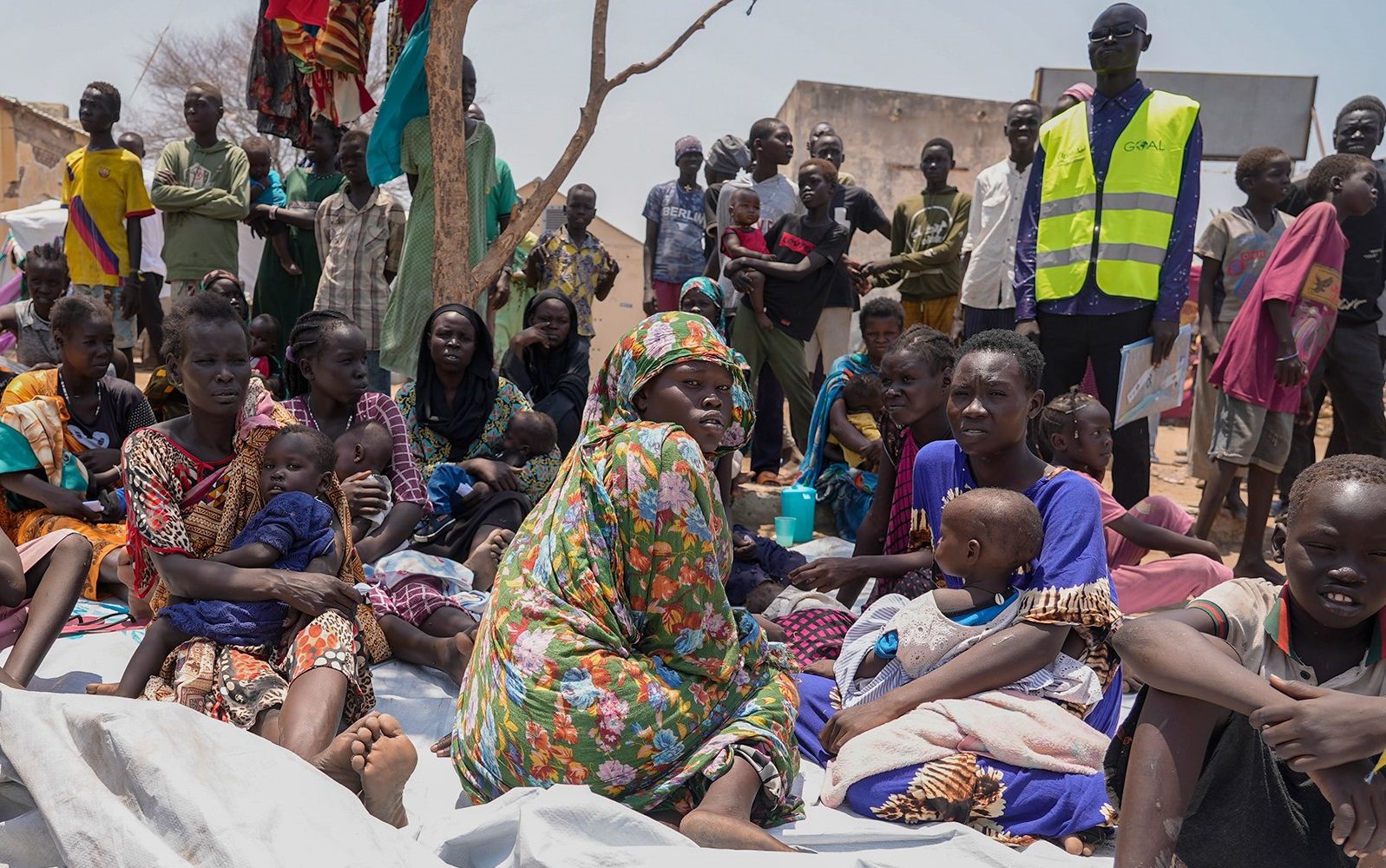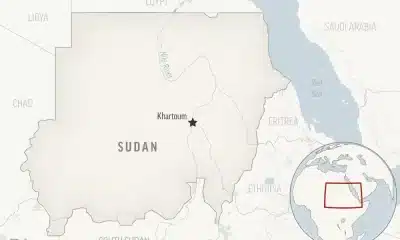News
Bodies Pile Up Without Burials In Sudan’s Capital, Marooned By A Relentless Conflict
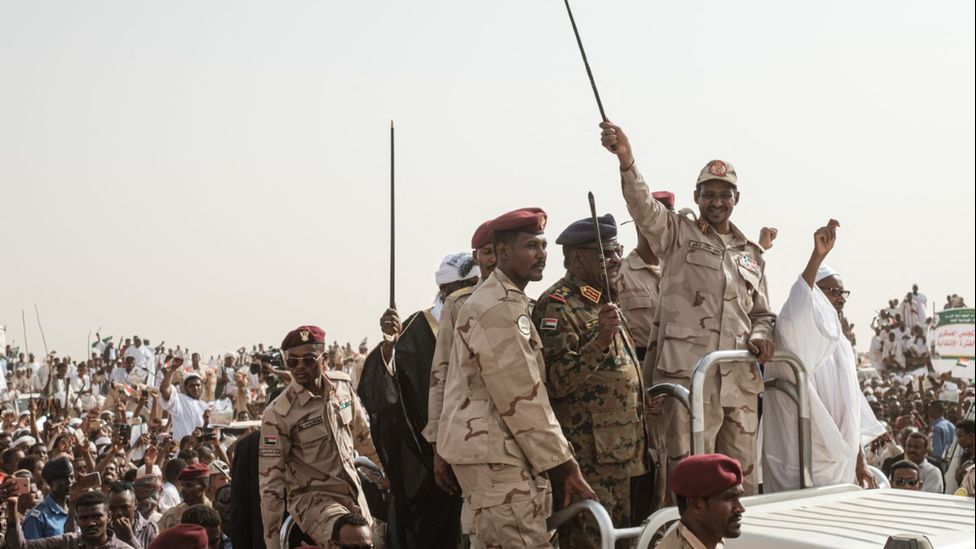
KHARTOUM, Sudan —In the capital of Sudan, Nobody could have predicted the funeral: Sadig Abbas’ dead body was hurriedly put into a small, unmarked grave in Khartoum.
According to Awad el-Zubeer, a neighbor of the deceased, even the few family members and neighbors who could attend were preoccupied, scanning the cemetery’s environs for signs of an approaching fire.
Funerals in Khartoum are impossible due to the nearly four months of bloody street fighting between the Sudanese Army and the paramilitary Rapid Support Forces (RSF). Residents and local medical organizations claim that bodies are rotting in the city streets, marooned by a conflict showing no signs of abating.
“Given these circumstances, if you asked me exactly where his body was buried, I couldn’t tell you,” El-Zubeer stated.
Information about Sudan’s casualties is scarce. The violence has claimed more than 3,000 lives, according to the country’s health minister, Haitham Mohammed Ibrahim, but there hasn’t been any new information since. According to campaigners and local doctors, the number is probably much higher.
The number of unburied bodies has also not been estimated by a medical organization, despite mass graves and widespread ethnic massacres being discovered in the southern Darfur region of the country.
According to the country’s doctors association, most people from the capital have been killed in the crossfire as the formerly tranquil metropolis has become urban warfare. Some reportedly starved to death while being imprisoned by the gun battles that raged outside, while others perished because they could not receive basic medical care.
Their burials would have been elaborate affairs lasting days in times of peace. In Sudan, memorial services for the departed frequently draw large crowds. By Islamic practice in Sudan, bodies are typically cleansed and blessed before being buried in family-dug graves at cemeteries.
Nobody could have predicted the funeral in the Sudan capital: Sadig Abbas’ dead body was hurriedly put into a small, unmarked grave in Khartoum.
According to seven former and current inhabitants of the capital region, the conflict between the country’s two highest generals, army chief Gen. Abdel Fattah Burhan and RSF commander Mohammed Hamdan Dagalo, has shattered this tradition. Three people spoke under the condition of anonymity for fear of retaliation.
Several people claimed that getting to the roughly twenty cemeteries in the capital was impossible when they tried to bury family members, friends, or people they were detained with.
When the crisis started on April 15, almost 100 university students were trapped inside Khartoum University. A fellow student reported that Khaled, a student, was struck in the chest by a stray bullet and passed away soon after.
He spoke anonymously out of concern for his safety since he didn’t want to be singled out. “We dragged his dead body to the lower levels (of a building) to stop it rotting,” he added.
After getting permission from Khaled’s family, he and others covered Khaled’s body in an improvised Islamic burial shroud and buried him on the university grounds beneath a tree.
A resident of Omdurman’s Beit al-Mal neighborhood, near the Nile River from Khartoum, Gasin Amin Oshi, claimed that RSF soldiers barred a neighboring family from interring a loved one in a local cemetery. Instead, they interred the woman on a school’s grounds after she passed away naturally.
Nobody could have predicted the funeral in the Sudan capital: Sadig Abbas’ dead body was hurriedly put into a small, unmarked grave in Khartoum.
Most locals claimed RSF troops, who govern substantial portions of the city, frequently create disruption. The army bombarded RSF camps in the capital during the early stages of the battle, forcing the RSF soldiers to flee and take over abandoned residences as bases. The army then used artillery and aircraft to attack civilian neighborhoods. U.N. statistics show that more than 2.15 million people have subsequently left Khartoum State.
El-Zubeer claimed that after RSF soldiers raided Abbas’ home and discovered that one of his brothers was an army officer and the other an intelligence officer, Abbas was shot and died. He claimed that once Abbas’ body was taken to a hospital, the RSF first forbade the burial without justifying but finally gave in to the family’s appeals.
However, according to el-Zubeer, most people either didn’t know about the funeral on June 30 or were too terrified to go. Since the start of the conflict, the nation has seen frequent power outages and internet shortages.
Mobile phones are just as beneficial for communication as a pack of cigarettes, according to el-Zubeer.
The RSF’s principal spokesperson, Youssef Izzat, told the AP that the leadership had not instructed to stop civilian burials. He said that the only reason any were stopped was because there was fierce combat nearby.
Nobody could have predicted the funeral in the Sudan capital: Sadig Abbas’ dead body was hurriedly put into a small, unmarked grave in Khartoum.
Contrarily, locals viewed the paramilitary as lawless and frequently driven by boredom and enjoyment. But occasionally, they claimed, there were good deeds.
One South Khartoum resident claimed that despite robbing individuals in his uncle’s neighborhood, a group of RSF militants unexpectedly offered to transport and bury the uncle after he passed away in July from natural causes.
Sudan’s Red Crescent has gathered and buried bodies throughout the capital since June. The group said it has discovered and buried at least 102 remains, most of whom are unidentified warriors from both sides, taking advantage of brief lulls in the battle.
A Red Crescent employee reported that after the bodies were gathered, they were photographed and given an identity number.
According to the international charity Save the Children, thousands of bodies may still be unburied in the city because many battle-torn areas are unreachable. A community organization from the Bahri neighborhood of the capital’s north requested last month that medical organizations pick up the bodies of roughly 500 RSF militants lying in wait on the streets. In recent weeks, an AP journalist in south Khartoum counted at least 26 bodies lying on the streets, mostly civilians and RSF fighters.
Nobody could have predicted the funeral in the Sudan capital: Sadig Abbas’ dead body was hurriedly put into a small, unmarked grave in Khartoum.
One victim had been lying in the open for so long in Khartoum’s al-Sahafa neighborhood, according to el-Zubeer, that the bones could be seen.
Unidentified bodies are typically transported to mortuaries. According to Dr. Atia Abdalla Atia, president of the Sudan Doctors Union, only five of the city’s roughly twenty hospitals are still in operation, and at least four have been abandoned due to fighting in the capital region.
International organizations and rights organizations worry that the rainy season in Sudan will result in more fatalities and infrastructural damage. Numerous people were killed by flooding last year.
Water supplies can become contaminated by decaying bodies.
According to el-Sadig el-Nour, the director of the Islamic Relief Worldwide for Sudan, many “people now drink from wells or the River Nile” out of desperation.
SOURCE – (AP)
News
Trami’s Tropical Storm Leaves 24 Fatalities In The Philippines’ Catastrophic Flooding And Landslides.
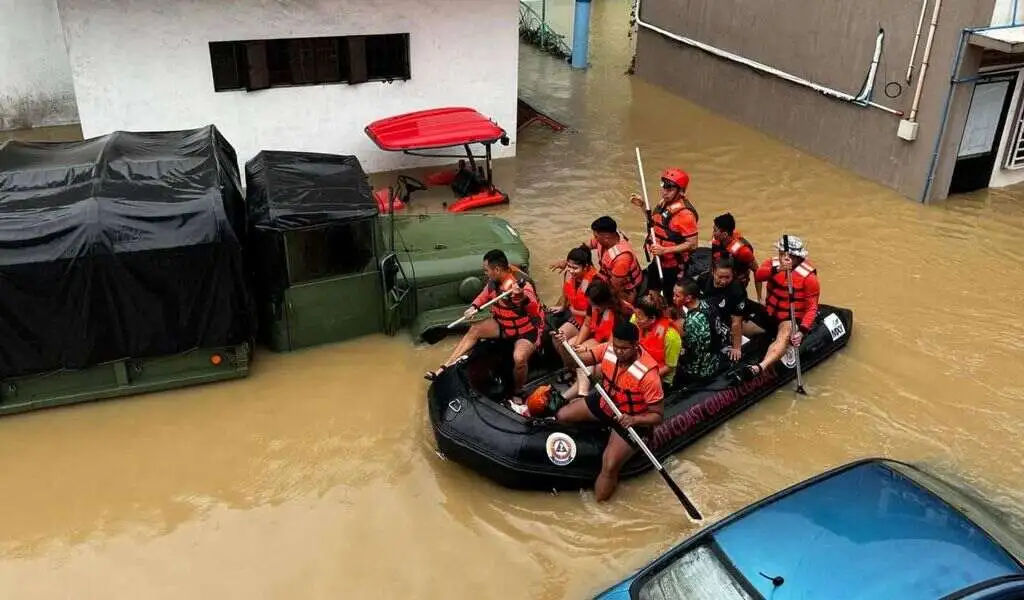
(VOR News) – The consequences of Tropical Storm Trami have directly resulted in the deaths of at least twenty-four Filipino persons.
This is a direct result of the destructive force that Tropical Storm has. The largest island in the Philippines, Luzon, had numerous landslides and floods as a result of Tropical Storm. On Luzon, these incidents took place. Both of these incidents occurred on the island of Luzon.
As a result, government offices and schools were ordered to close for a second day, save for those who had to start disaster relief work right away. This was the outcome of the circumstances.
During this period, there were no tropical storms and only infrequent occurrences.
There were continuous winds of up to 59 miles per hour (95 kilometers per hour) and gusts of up to 99 miles per hour (160 kilometers per hour) during the tropical storm, which the locals called Kristine. The majority of those killed were found to have drowned in the heavily destroyed Bicol region and the nearby province of Quezon. The Philippines is home to both of these provinces.
Police and provincial officials noted that they had expected a rise in the number of deaths that would affect the populace. This would have an impact on those who are impacted by it.
Thousands of peasants in the central region of Bicol were unable to escape the floodwaters brought on by the deluge. They were successfully rescued by the government and military without any problems.
Floodwaters rose to a height equivalent to bungalow roofs as they reached their highest peak. The floodwaters were used to reach this altitude. It reached this height because of the tsunami. It was at that moment that the floodwaters rose to the level of the bungalow roofs. At this moment, the floodwaters rose to that level.
According to the claims of Brigadier General Andre Dizon, the current head of the regional police force, around 1,500 police officers were sent to participate in disaster mitigation drills.
These exercises, which were carried out in compliance with Tropical Storm training, came after the aforementioned remark. That being said, a significant portion of the population still realized they needed help because they were in complex circumstances.
Brigadier General Dizon said, “We are unable to rescue all of them at the same time because there are so many, and we require additional motorboats.” Here is that remark.
Each promotional and advertising material has a distinct form.
“We’re looking for ways to deliver food and water to those who were Tropical Storm trapped but could not be evacuated right away.” Furthermore, he stated that flash floods were the cause of cars being washed away and drowning in water. It was pointed out to him that this was the source of the issue.
The authorities issued a warning to the public to inform them that the bad weather was making it more difficult to maintain the operations involved in relief efforts.
Over two million people have been affected by the storm, according to the government body in charge of lessening the effects of natural catastrophes on behalf of the government. The organization stated that this information was accessible. After being forced from their homes, 7,400 residents are now searching for a safe haven on another, more secure piece of property.
They have been compelled to leave their residences. The total number of villagers who have been compelled to leave their homes is the number that is shown above.
There are just twenty tropical storms that have ever made landfall in the Philippines in a single year, which is extremely rare. This region, which is in the southeast of the nation, is home to the Philippines.
These tropical storms often bring with them a variety of adverse weather conditions. These conditions can include, but are not restricted to, heavy rains, extremely powerful wind gusts, and potentially lethal landslides.
SOURCE: SKY
SEE ALSO:
Donald Trump Will Make A Final Point. He Isn’t Following It.
Mitch McConnell: ‘The MAGA Movement Is Entirely Erroneous.’
News
Mitch McConnell: ‘The MAGA Movement Is Entirely Erroneous.’

(VOR News) – Mitch McConnell, a Kentucky native and the outgoing Senate leader of the Republican Party, has said the “MAGA movement” is a complete hoax and that former President Trump has hurt the Republican Party’s chances of winning. McConnell is a senatorial member.
Trump has been the most significant influence in transforming the Republican Party from Ronald Reagan’s perspective, to the extent that Reagan would not recognize it today.
Michael Tackett’s recent Associated Press biography quotes Mitch McConnell.
This year in March, Tackett’s biography was released. The biography of Tackett was published in the most recent issue of The Associated Press. In August of this year, Tackett’s biography was published and made available to the public.
CNN was the first news outlet to cover these snippets, and they did so on Thursday. The first such organization was CNN.
He has “done a lot of damage to our party’s image and our ability to compete,” said House of Representatives leader Mitch McConnell. Additionally, it has hurt our ability to compete.
Mitch McConnell stated in an interview that Trump is appealing to individuals who have not achieved the same level of success as others by offering a rationale that suggests the more successful individuals have somehow cheated, implying that one should not perceive themselves as less successful due to perceived unfairness. Trump is offering a justification for that.
He had given the statements to an oral historian, and there was a chance that his biographer could get them.
The person who is nearing the end of his unprecedented 18-year tenure as the Senate’s Republican leader told the historian what he thought. The Republican Party’s leader is now serving the remainder of his tenure.
Senate Majority Leader Mitch McConnell has voiced his disappointment with President Trump’s ability to retain the support of Republican voters as he shifts the Republican Party away from its long-standing stance in favor of immigration, free trade, and the projection of military might abroad.
Donald Trump is currently trying to divert the Republican Party from these concepts. He is currently advancing the gathering.
Mitch McConnell asserts that “unfortunately, approximately half of the Republicans in the country believe whatever he says.”
This is in line with Mitch McConnell’s assessment.
According to his prediction for the end of 2020, “I think I’m pretty safe in saying that it’s not just the Democrats who are counting the days until he leaves on January 20 but the Republicans as well,” he continued.
“It goes without saying that the Republicans are also counting the days until he leaves.” “It’s not just the Democrats who are counting the days until February 20.” “It’s not just the Democrats who are counting down.”
According to Mitch McConnell, some of the most destructive words he has ever made were directed at the measures that Trump took after he was defeated in the election of 2020.
On multiple occasions throughout his address, he referred to Trump as “erratic.” In addition to this, he questioned whether or not he was qualified for the post that he was applying for.
He continued by characterizing Trump as “not very smart, irascible, nasty, and just about every quality you would not want somebody to have.” He continued by saying that Trump possesses each and every one of these attributes.
“The Price of Power: How Mitch McConnell Mastered the Senate, Changed America, and Lost His Party,” the new biography, discusses the profound effect that the January 6, 2021, attack on the US Capitol had on Mitch McConnell. The attack took place on the same day that the US Capitol was attacked.
“You are my family, and I hate the fact that you had to go through this,” he said to his staff just hours after Trump fans were found responsible for the Senate offices being wrecked. “I hate the fact you had to go through this.” Talking to them made him somewhat emotional. His feelings were uncontrollably strong.
In his remarks, he said the episode was a “shocking occurrence and further evidence of Donald Trump’s complete unfitness for office.” He then said the incident was “significant.”
SOURCE: THN
SEE ALSO:
‘Malcolm In The Middle’ Star Frankie Muniz Lands Full-Time NASCAR Ride In 2025
The FBI Looks At Claimed Leaks Of Sensitive Israel Attack Records.
News
The FBI Looks At Claimed Leaks Of Sensitive Israel Attack Records.
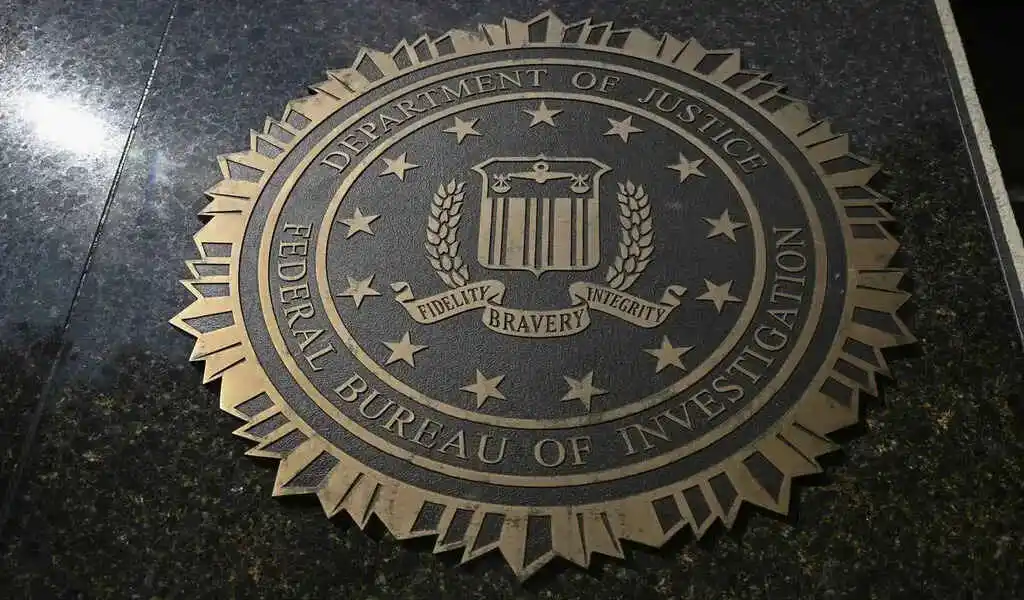
(VOR News) – According to reports, the Federal Bureau of Investigation (FBI) announced yesterday that it is initiating an investigation into the leak of documents that are apparently classified and explain Israel’s plans for its reprisal strike on Iran.
The materials were allegedly leaked by a third party. It was reported by Anadolu that this information had been found.
As stated in a statement that was made by the agency, the Federal Bureau of Investigation (FBI) is currently conducting an inquiry into the suspected disclosure of private information. This investigation is currently being carried out.
In order to carry out this inquiry, the Federal Bureau of Investigation (FBI) of Inquiry is working closely with its counterparts in the Department of Defense and the Intelligence Community. Because this inquiry is still in progress, we are unable to provide any additional commentary at this time.
We regret any trouble this could possibly cause the FBI.
With regard to the situation that is currently being considered, the White House announced on Monday that the Pentagon is beginning its own inquiry into the matter. As of this moment, the authorities are unable to ascertain if the records of the FBI were made accessible to the general public as a consequence of a breach or leak.
This has come about as a direct result of the fact that the Pentagon is currently conducting its own investigation into the matter.
The President remains highly apprehensive of the potential public accessibility of confidential material following its disclosure. Considering the FBI’s assertion that no such event is planned for that site, it would be inappropriate for it to occur there should it transpire.
John Kirby, a spokesperson for the National Security Council, stated, “He is profoundly concerned about this matter and will diligently oversee the progress of the investigation to ascertain how this transpired.” This aligns with the assertions made by Kirby.
Following the dissemination of the FBI documents on the Middle East Spectator Telegram channel, they started making their way across the internet on Friday. The documents had dates of October 15 and 16, and they were dated.
The FBI dates of the documents were the 15th and 16th of October.
According to a number of publications, the disclosures are alleged to have originated from a source within the intelligence establishment of the United States of America.
It has been asserted that the FBI and National Geospatial-Intelligence Agency of the Department of Defense were the ones responsible for the development of one of the documents. This document asserts that Israel’s intentions involve the delivery of bombs.
The Israeli Air Force is currently engaged in the process of performing air-to-surface missile training exercises, according to another document that outlines the Israeli Air Force. Additionally, it is believed that these drills are being conducted in preparation for an act of war against Iran.
The Vice President of the United States, Joe Biden, responded to a question that was given by reporters on Friday by the FBI saying, “Yes and yes.”
His response to the question of whether or not he had a “good understanding” of what Israel’s reaction to Iran’s ballistic missile launch on October 1 would comprise and when it would take place was required to be given.
According to Iran, the strike was carried out as a form of vengeance for the assassinations of Hassan Nasrallah, the Secretary-General of Hezbollah, and Ismail Haniyeh, the former political head of Hamas, who was killed in Beirut a month ago. Both of these individuals were killed in the same location.
The deaths of both of these persons were brought to their respective parties’ attention. Haniyeh was killed as he was participating in an official visit to Tehran in the month of July. The tour was on official business.
SOURCE: MEM
SEE ALSO:
South Korea Requests That Russia Cease The Apparent Deployment Of North Korean Troops.
-
News3 weeks ago
The Biden Administration can go Ahead With Student Loan Forgiveness, Says a Federal Judge.
-
News3 weeks ago
Tesla Recalls 27,000 Cybertrucks Due To A Rearview Camera Issue
-
World3 weeks ago
Uber Hires Yandex Spinoff Ride-Hail and Autonomous Delivery With Avride
-
Tech3 weeks ago
Accenture and NVIDIA Collaborate to Enhance AI Implementation.
-
Tech3 weeks ago
Meta has started the Facebook Content Monetization Program.
-
Election News3 weeks ago
Chief Operating Officer Of Truth Social’s Parent Company Resigns

